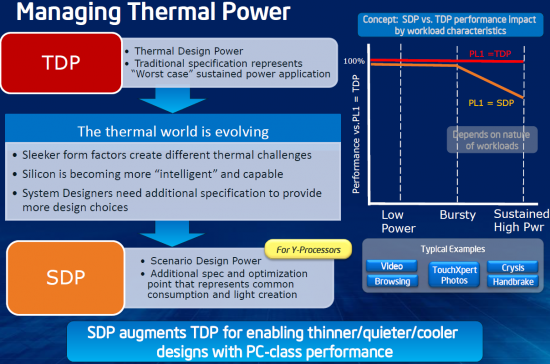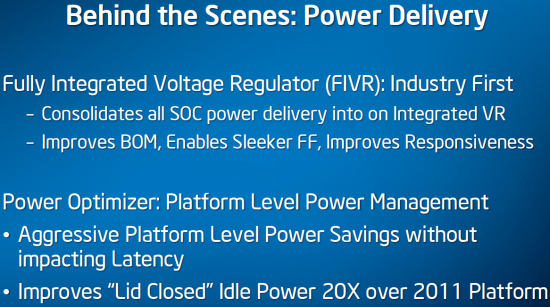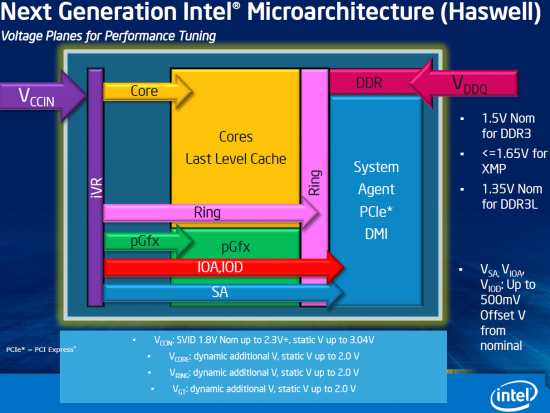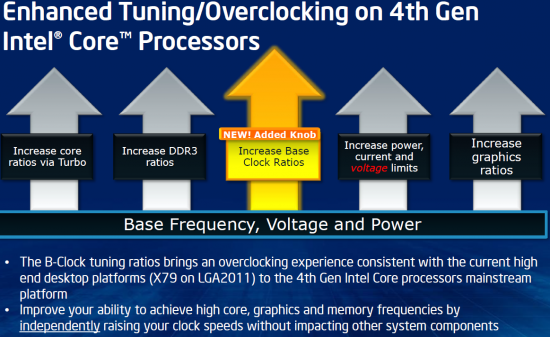Intel Core i7-4770K Haswell 3.5GHz Quad-Core CPU Review
Haswell Processor Architecture Overview

There are some new compute instructions and they should be well received assuming people use software that can take advantage of them. Sandy Bridge’s AVX doubled the flops/core in both single and double precision calculations from Nehalem’s SSE and Haswell is doing the same with AVX2, doubling Sandy Bridge’s flops/core from 16 to 32 flops/core single precision and 8 to 16 flops/core double precision. In addition to that doubling, AVX2 also doubles the L1 and L2 cache bandwidth, up to 96 bytes/clock and 64 bytes/clock, respectively.

One of the major Microarchitecture enhancements on Haswell is the addition of Advanced Vector Extensions 2 (AVX2) support. AVX2 is an expansion of the new AVX instruction set introduced with Sandy Bridge processors. AVX2 makes the following additions:
- Expansion of most integer AVX instructions to 256 bits
- 3-operand general-purpose bit manipulation and multiply
- Gather support, enabling vector elements to be loaded from non-contiguous memory locations
- DWORD- and QWORD-granularity any-to-any permutes
- Vector shifts 3-operand fused multiply-add support (FMA3)

Intel has also put a ton of work into making Haswell more energy-efficient. Haswell processors feature C-states of C0, C1, C1E, C3, C6, C7 and enhanced Intel Speedstep technology.

Have you heard about Intel’s Fully Integrated Voltage Regulator or (FIVR) for short? Haswell is the first x86 CPU to include an on-die voltage regulator module, or VRM. Intel says that having this directly on the processor improves build costs, lowers voltage ripple, responds quicker and should give you power savings as it is more efficient than your traditional motherboard VRM. The only downside to this is that it puts more heat into the processor, but the power savings and being able to enter and exit power-saving states more quickly should be worth it.

This slide shows you the number of voltage planes that are available on Haswell for performance tuning. There are more platform level power management options than ever. Intel has gone to great lengths to improve the power use on Haswell, but at the same time still give enthusiasts control of a good number of knobs.

Since we are talking about enthusiast options, you should be happy to hear that Intel has brought back the CPU Strap feature. This allows end users to increase the processors BCLK (base clock) independently without impacting anything else on the Haswell processor.

At the end of the day the Haswell microarchitecture looks great and is clearly a step in the right direction when it comes to power savings and performance design. When compared to the previous Ivy Bridge processors, you should see some nice power savings.

Comments are closed.